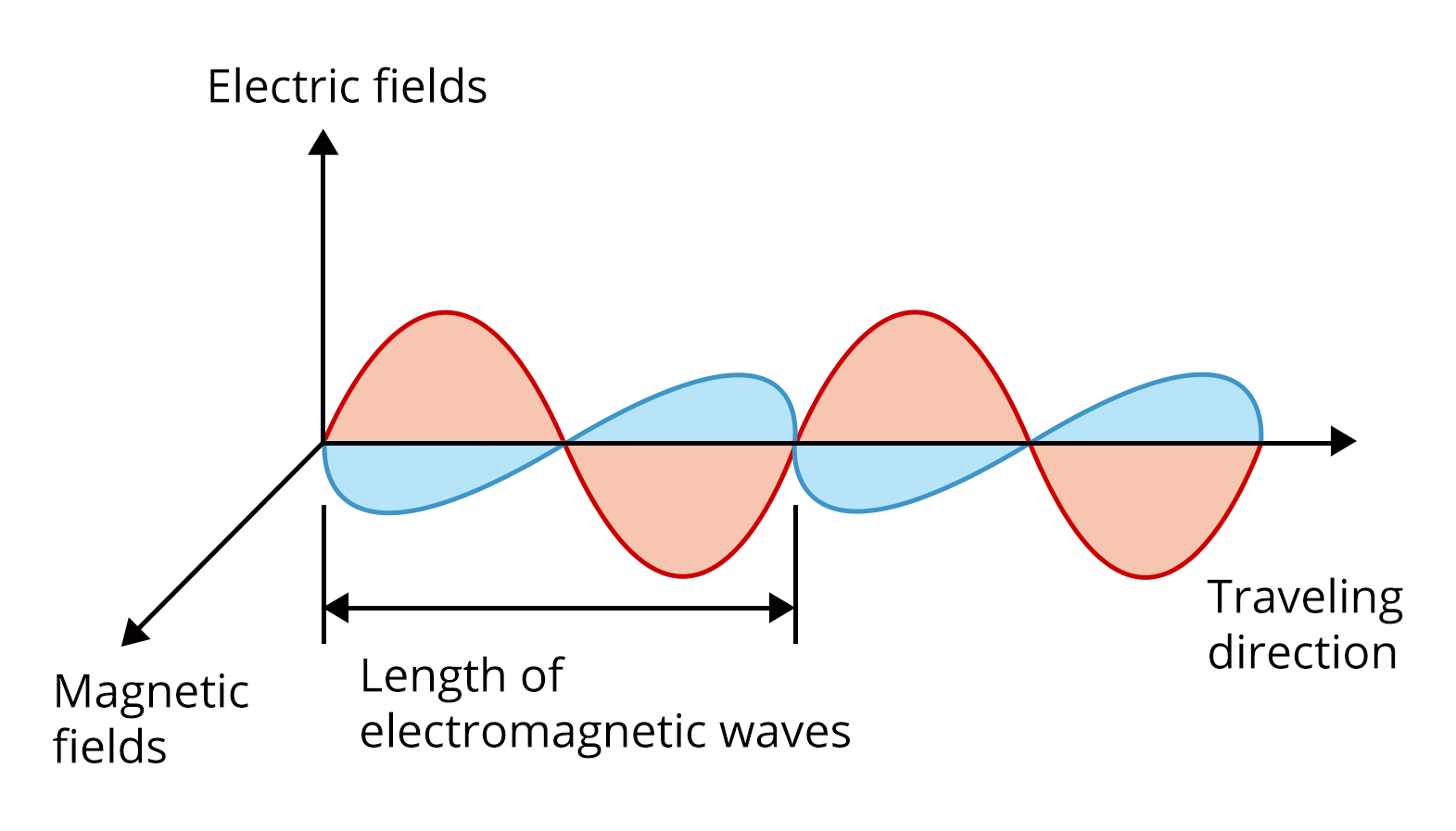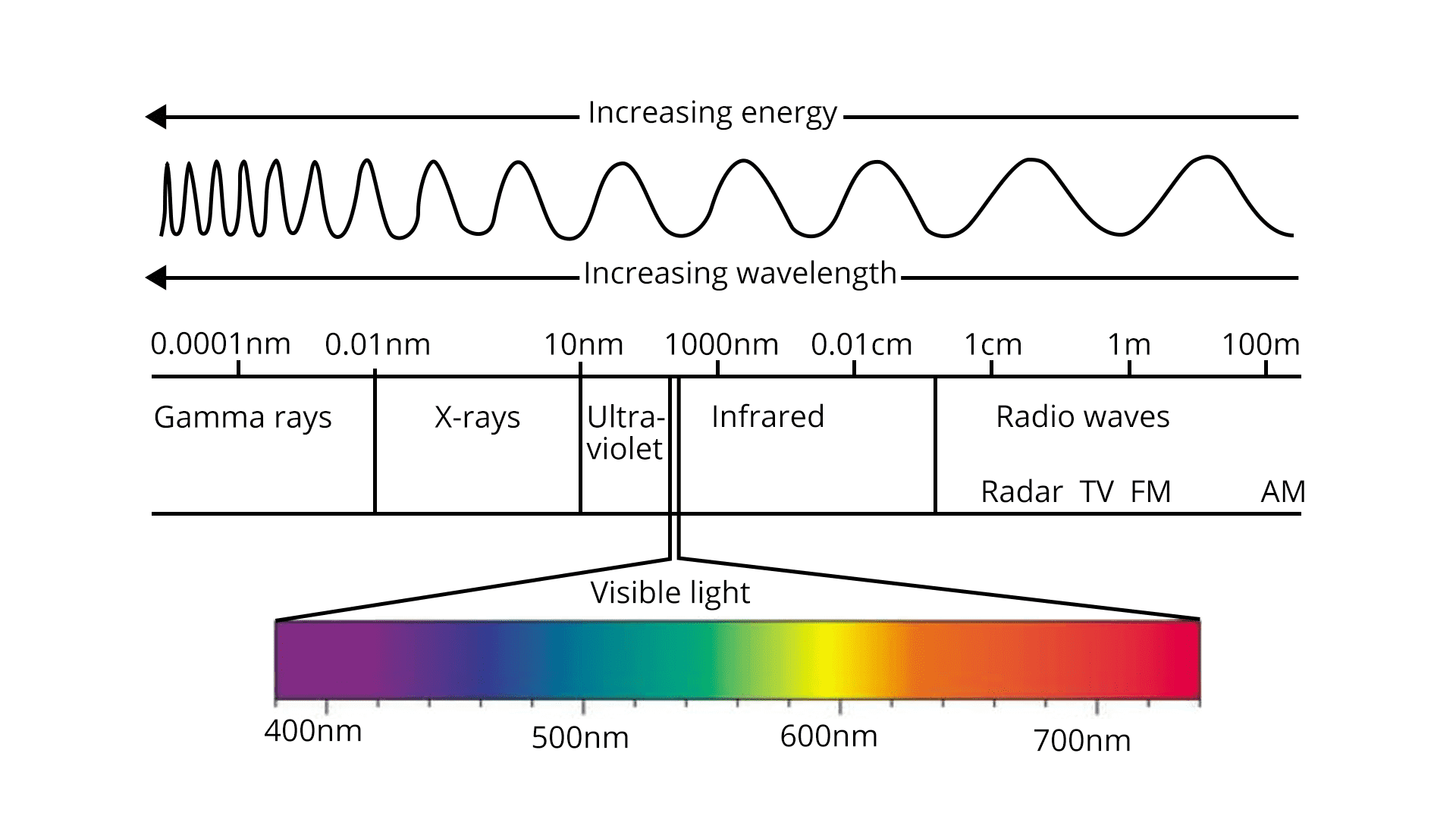




Important Concepts of Electromagnetic Waves
In the previous chapters, we have learnt that electric current produces magnetic fields and changing magnetic fields produce electric fields.
In this chapter, we will discuss whether changing electric fields develops magnetic fields or not. James clerk Maxwell explained that not only electric current but also varying electric fields, with time, also generate magnetic fields. He introduced displacement current along with conduction current.
We will also discuss Maxwell's equations in this chapter, which proves the existence of electromagnetic waves. Maxwell corrected the ampere law by adding the effect of displacement current and gave Ampere - Maxwell's law.
We will also get to know what is the source of electromagnetic waves and their nature, speed, frequency, wavelength and intensity in this chapter, as well as, know about the relationship between electric field and magnetic field.
This chapter also discusses the spectrum of electromagnetic waves, which is an electromagnetic spectrum that contains a list of waves like radio wave, microwave, infrared wave, visible wave, and ultra visible rays.
We will also deal with light, which is an electromagnetic wave and find the relationship between electric field and magnetic field.
Now, let's move onto the important concepts and formulae related to NEET exams along with a few solved examples and previous year questions.
Important Topics of Electromagnetic Waves
Revision Notes of Electromagnetic waves
Electromagnetic Spectrum
Electromagnetic Waves - Definition, Equation and Properties
NCERT Solutions - electromagnetic wave
Displacement equation
Maxwells Equations
Radio Waves
The Electromagnetic Spectrum Visible Light
Velocity of Electromagnetic waves
Electromagnetic Waves Important Concept for NEET
List of Important Formulae for Electromagnetic Waves
Solved Examples
1. A plane electromagnetic wave of frequency 4 Mhz travels in free space along the x-direction. At a particular point in space and time, E = 6.3
Sol:
Given:
Electric field = E = 6.3
We know that velocity of light =
The relation between electric and magnetic fields is
B =
For direction - As per question, the electric field is in y-direction and waves propagate in x-direction. So the magnetic field is perpendicular to both the wave vector (K) and the electric field (E).
Therefore, the magnetic field is along the z-direction
Key Point - Keep in mind the relation between electric and magnetic fields.
2. A charged particle oscillates about its mean equilibrium position with a frequency of
Sol:
The frequency of the electromagnetic wave is the same as that of an oscillating charged particle about its equilibrium position, which is
Key Point: As accelerated charges radiate electromagnetic waves, the frequency of electromagnetic waves naturally equals the frequency of the oscillation of charge.
Previous Year Questions From NEET Paper
1. The ratio of contributions made by the electric field and magnetic field components to the intensity of an electromagnetic wave is (c is speed of electromagnetic wave ) (NEET 2021)
C : 1
1 : 1
1 : c
Sol:
The intensity of an electromagnetic wave is given by:
The average electric energy =
The average magnetic energy =
We know that the relation -
Here, c is the velocity of light that has a constant value.
The average electric energy is
=
As we can see that the energy due to electric fields and magnetic fields is the same, therefore they make the same contribution in intensity.
Trick - Average energy due to electric field and magnetic field are equal.
2. For a plane electromagnetic wave propagating in the x-direction, which one of the following combinations give the correct possible direction for electric field (E) and magnetic field (B), respectively ?(NEET 2021)
Sol:
Option (4) is correct.
As per the question, the waves propagate in the x-direction. So the wave vector (K) is also in x-direction. The magnetic field and electric field both are perpendicular to the wave vector (K).
Direction of propagation of electromagnetic waves or k vector is along the product of electric or magnetic field.
By checking all the options, it can be seen that only option (c) follows the condition.
Trick - Electromagnetic waves propagate in the direction of the propagation vector and perpendicular to magnetic field and electric field.
Practice Questions
1. A plane electromagnetic wave travels in vacuum along the z-direction. What can you say about the directions of its electric and magnetic field vectors? If the frequency of the wave is 300 MHz, what is its wavelength? (Ans: 1m)
2. A radio can tune into any station in the 7.5MHz to 12MHz band. What is the corresponding wavelength band? (Ans: 40m to 25m )
Conclusion
In this article, we have provided important information regarding the chapter, such as important topics, concepts, and formulae, etc. Students should work on more solved examples for securing good marks in the NEET 2022 exams. Try to remember the relationship between all the parameters that are required to understand the electromagnetic wave.
FAQs on NEET Important Chapter - Electromagnetic Waves
1. What is the weightage of the chapter Electromagnetic Waves the NEET exam?
In the NEET exam, there are 45 questions asked in the Physics section. Out of 45, there are 1 question on average that comes under this chapter, which is nearly 1 - 2% of the Physics section in the exam.
2. How can we expect full marks for questions from the chapter Electromagnetic Waves NEET exam?
This chapter Electromagnetic Waves is a very simple chapter in Physics. Try to remember all the properties of electromagnetic waves and relationship between parameters like wavelengths, frequency, wave vector, velocity of light and angular velocity. If you practice Previous Year Question Paper, and reference books then you can easily get full marks from this chapter in the exam.
3. What is the difficulty level of questions in the NEET exam from the chapter Electromagnetic Waves ?
As far as NEET is concerned, the difficulty level is medium for the chapter Electromagnetic Waves. Go through the previous year's question papers, and try to solve it. Most of the questions are formula based questions from this chapter and learn all the concepts and formulae related to it.











